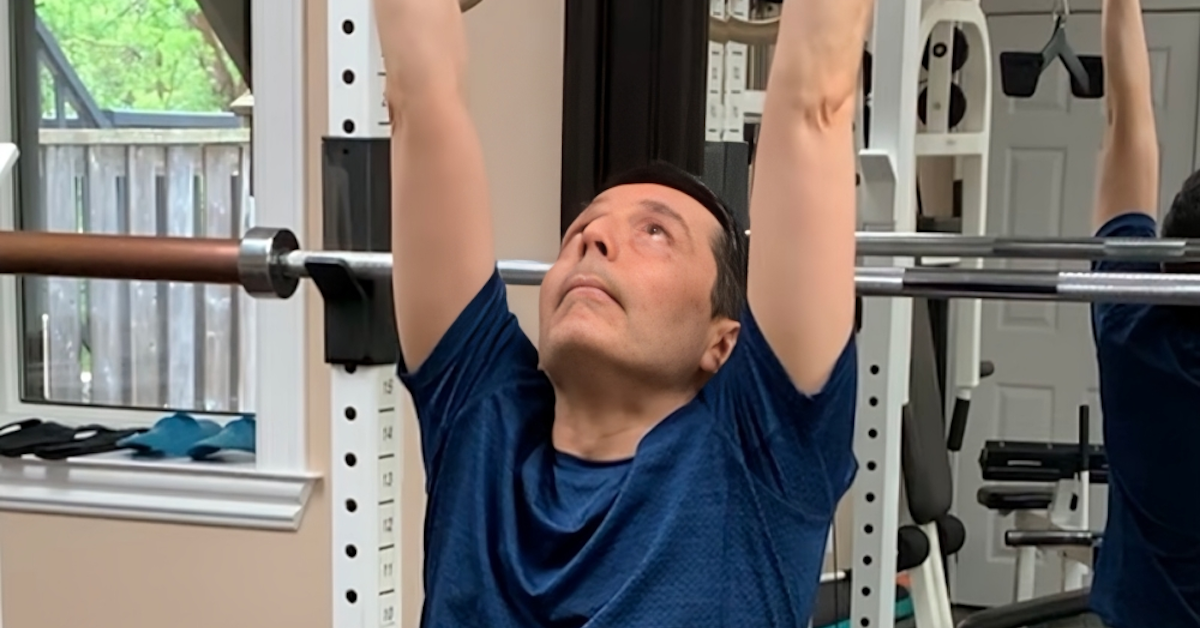To maximize intra-abdominal pressure (IAP) during strength training, research indicates that you should breathe deeply (about 75% of maximum) into your belly and hold that breath throughout the rep, exhaling only after completing the movement. This technique provides optimal spinal support, enhances strength, and reduces injury risk.
Breathing and Athletic Performance
Proper breath control isn’t just crucial for lifting—it’s essential for athletic performance as well.
- Sprinters often hold their breath for the first 15 meters of a race to stabilize the core, ensuring maximal force transfer from the legs and arms.
- Archers and marksmen use breath-holding techniques for greater stability and accuracy.
- Combat pilots perform the Valsalva maneuver (exhaling against a closed glottis) to prevent blackout during high G-force maneuvers.
According to Paul Chek, if stabilization doesn’t happen, the core becomes soft, leading to energy dissipation and reduced performance.
The Power of the Valsalva Maneuver
The Valsalva maneuver—or even a partial version (holding your breath until you pass the sticking point)—enhances intra-abdominal pressure, making you stronger and more stable.
Want proof? Try this experiment from strength coach Lorne Goldenberg:
- Perform a heavy squat or deadlift while holding your breath for at least the first ¾ of the concentric phase, then exhale at the top.
- On another attempt, start exhaling as you lift.
What will you notice?
You’ll be able to handle more weight when you hold your breath! Exhalation releases tension and relaxes the body—not something you want when driving out of the hole in a squat or deadlift. Improper breathing patterns? Get ready for a sore spine!
The Myth of “Exhale on the Lift”
Many experts now agree that the old-school advice of exhaling while lifting and inhaling while lowering is flawed.
Renowned sports scientist Dr. Mel Siff once stated:
The careful instruction as to the technique of a given exercise will automatically result in the body responding with the optimal muscle recruitment strategy throughout the duration of the movement.
This applies to breathing as well.
The Take-Home Message
While a few exceptions exist, the key takeaway is simple: let your breathing—or breath-holding—happen naturally during strength training.
Nothing in strength training is set in stone, but if you want your abs to look like they were chiseled from rock, question the myths and seek the real answers. That’s how you get to the core issues!

Leo’s Chin-Up Journey (Day 1): From Zero to Hero
Can’t Do a Chin-Up? Neither Could Leo… But That’s About to Change. Leo started training with me back in September.

The Interference Effect: How to Maximize Strength and Endurance Gains
When it comes to fitness, many people strive to improve both strength and endurance. However, combining resistance and endurance training

How to Fix Lagging Body Parts: Proven Training Strategies
If you have a muscle group that refuses to grow, you have two options: Let’s break down both strategies and
follow
Error: No feed with the ID 2 found.
Please go to the Instagram Feed settings page to create a feed.
